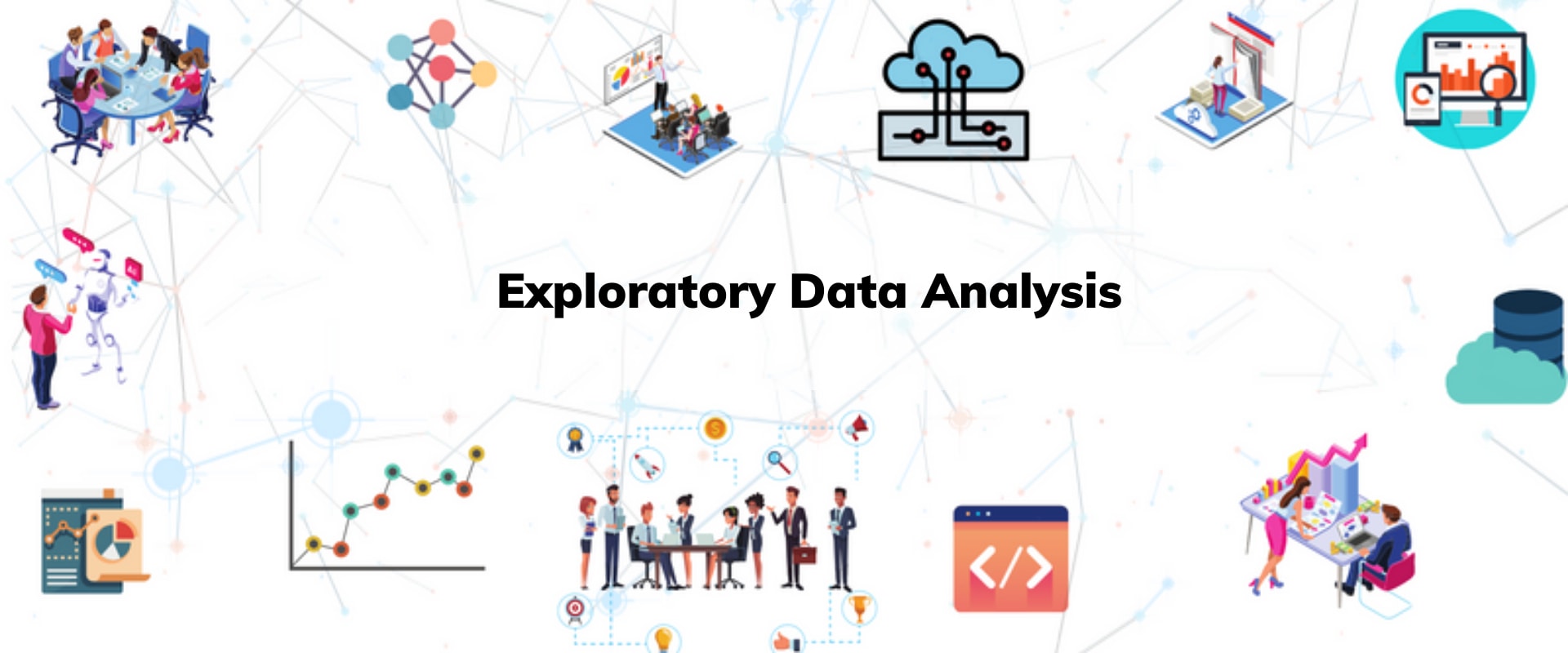Day 2: Exploratory Data Analysis (EDA)
 Brian Wanjala
Brian Wanjala
Introduction
EDA is a method of analyzing and summarizing a dataset in order to better understand the underlying structure and patterns within the data. It is an important step in the data science process and can help identify issues with the data, such as missing values or inconsistencies, as well as uncover trends and relationships that may not be immediately apparent.
Commonly steps used in EDA
EDA is an iterative process and can involve several rounds of analysis and visualization to fully understand the data.
We find that this is an important step in the data science process because it helps to identify important trends and patterns in the data, and can inform the development of more advanced models and analyses.
The following are the commonly used techniques in EDA
Descriptive Statistics
Calculating measures such as mean, median, mode, and standard deviation to summarize the data.
Data Visualization
Using plots and charts to visualize the data and better understand the relationships between variables.
Data Cleaning
Identifying and correcting errors or inconsistencies in the data
Outlier Analysis
Identifying and addressing extreme or unusual values in the data
Correlation Analysis
Identifying relationships between variables
After we outline the EDA techniques, a question pops up...
How do we find patterns and trends in data?
Among others, there are several techniques that you can use to find patterns and trends in data. Some common techniques include:
Visualization: One of the easiest and most effective ways to find patterns and trends in data is to create a visual representation of the data using charts, graphs, or plots. This can help you identify patterns and trends that may not be immediately obvious when looking at the raw data.
Time series analysis: If your data is collected over a period of time, you can use time series analysis to identify trends and patterns in the data. This involves analyzing the data in the context of time, looking for trends or patterns that repeat or change over time.
Correlation analysis: You can use correlation analysis to identify relationships between different variables in your data. This can help you identify patterns and trends that may not be immediately obvious when looking at the data.
Regression analysis: Regression analysis is a statistical technique that can be used to identify the relationship between a dependent variable and one or more independent variables. This can help you identify trends and patterns in the data, and can also be used to make predictions about future values of the dependent variable.
Machine learning: Machine learning algorithms can be used to automatically identify patterns and trends in data. This can be especially useful when working with large datasets, as it can be difficult to manually identify patterns and trends in this type of data.
In conclusion, the best approach for finding patterns and trends in data will depend on the specific characteristics of the data and the questions you are trying to answer.
Identifying potential problems and limitations in data
There are several potential problems and limitations that can arise when working with data. Some common issues include:
Incomplete or missing data: This can occur when data is not collected properly or when certain data points are not recorded. This can lead to biased or inaccurate results.
Inconsistent or ambiguous data: Data can be inconsistent or ambiguous if it is not recorded or entered correctly, or if it is not standardized. This can make it difficult to analyze and interpret the data.
Outliers: Outliers are data points that are significantly different from the rest of the data. These points can skew the results of an analysis and should be carefully examined to determine if they are valid or if they should be excluded from the analysis.
Limited sample size: A small sample size can limit the representativeness and generalizability of the results. This is especially important when working with statistical analyses that rely on large sample sizes.
Bias: Bias can occur in the data collection process, such as when the sample is not representative of the population, or in the analysis process, such as when certain assumptions are made that may not be valid.
Accuracy: The accuracy of the data is also an important consideration. Data that is inaccurate or unreliable can lead to incorrect conclusions and decisions.
It is important to carefully consider these potential problems and limitations when working with data to ensure that the results of an analysis are accurate and reliable.
How?
For example, if the data is incomplete or missing, this can lead to biased or inaccurate results. If the data is inconsistent or ambiguous, it can be difficult to accurately interpret the results. Outliers can skew the results of an analysis, and small sample size can limit the representativeness and generalizability of the results. Bias in the data collection or analysis process can also affect the accuracy and reliability of the results.
Therefore, it is essential to carefully examine the data for any potential problems or limitations before conducting an analysis. This may involve cleaning and preprocessing the data, verifying the accuracy of the data, and considering the potential impact of any biases or other issues on the results. By carefully considering these potential problems and limitations, it is possible to ensure that the results of the analysis are accurate and reliable, which is critical for making informed decisions and conclusions.
Subscribe to my newsletter
Read articles from Brian Wanjala directly inside your inbox. Subscribe to the newsletter, and don't miss out.
Written by

Brian Wanjala
Brian Wanjala
My name is Wanjala. Currently the community lead of Nairobi AI (@Nairobi_ai) & a core team member of The Co-operative University of Kenya. I am a student pursuing a Bsc. in Business Information Technology. I have been able to pursue Data Science; part-time under the Co-operative University, Kenyatta University & the University of Nairobi sponsored Python for Data science course. I have been able to pursue Data Engineering classes as well under Lux tech Academy. I am also enrolled at ALX as a Software Engineer Trainee & currently in phase II and a member of The Room. I love fonts,speed and cars. I hate anything that wastes my time.